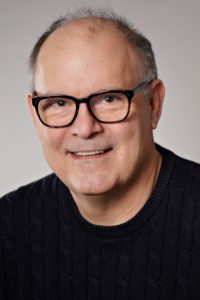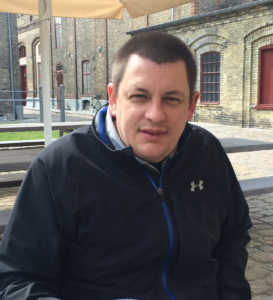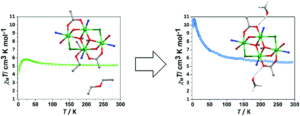Prof. Catherine Housecroft, Prof. Ed Constable and Dalton Transactions
This year we are celebrating the 50th volume of Dalton Transactions, by taking a look at some of our authors who have published over 50 articles in the journal. This week we learn what Dalton Transactions means to Professor Catherine Housecroft and Professor Ed Constable.
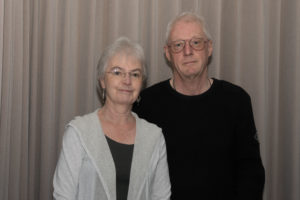
Our authors at a glance:
Professor Catherine Housecroft and Professor Ed Constable are a married chemical partnership. They are based at the University of Basel’s Department of Chemistry, where their joint research interests include coordination chemistry and supramolecular chemistry, in addition to sustainable and materials chemistry. They choose to publish in Dalton Transactions as the journal provides “strong support to authors, rigorous and fair refereeing, and rapid production from acceptance to print”, and has evolved and developed throughout their scientific careers, to reflect their interests and activities.
Please can you summarise your most recent research published in Dalton Transactions?
Light-emitting electrochemical cells (LECs) represent an alternative technology and device architecture to the well-established OLED lighting devices. The architecture of a LEC is substantially less complex than an OLED allowing the construction of more robust devices under less demanding fabrication conditions. Inorganic complexes are widely used as emitters in both LECs and OLEDs, with the most effective utilizing the rare and expensive element iridium. We are developing emissive heteroleptic copper(I) complexes for incorporation into the emissive layers of LEC devices to substitute for the non-sustainable iridium species.
How do you intend to expand upon your research in the future?
A significant expansion of research is not an option beyond the next two years, when we reach retirement age. Nevertheless, until that point we will continue to improve the performance of materials to be used in the establishment and optimization of sustainable technologies. After that, we will continue with our contributions to the Swiss and European chemistry communities, both in terms of educational and research contributions and in involvement with national and international efforts relating to scientific coordination, editorial coordination and scientific integrity.
What would you say are the biggest barriers which need to be overcome to expand your research?
Getting older!
You’ve published over 50 articles in Dalton Transactions, which of these works do you find to be most interesting/significant for our broad inorganic audience?
Probably the most interesting are:
4,2′:6′,4”-Terpyridines: diverging and diverse building blocks in coordination polymers and metallomacrocycles and Synthesis and coordination behaviour of 6,6’-bis(2-pyridyl)-2,2’:4’,4’’:2’’,2’’’-quaterpyridine – back-to-back 2,2’:6’,2’’-terpyridine.
These two papers represent the beginning and a recent overview of our journey with terpyridine ligands from “simple” mononucleating species to core components in coordination networks.
Outside of your own research, please suggest a Dalton Transactions article which you think has made a significant contribution to its field?
The Frontier and Perspective articles collection published in 2020, contains some inspiring articles. It is hard to choose a single contribution from these Frontiers and Perspectives articles, but one that stands out is – Recent advances in iron-complexes as drug candidates for cancer therapy: reactivity, mechanism of action and metabolites Mathilde Bouché, Cécilia Hognon, Stéphanie Grandemange, Antonio Monari and Philippe C. Gros
What advice do you have for young researchers new to your field?
It would be too easy to make a trite response here. But we resist this temptation. We make three observations. Firstly, read the literature – but not too carefully. If you read everything about a topic, you rapidly come to the conclusion that there is either nothing left to do or, even worse, that you are unworthy to make a contribution. Secondly, don’t be afraid to make mistakes or instigate projects that fail. Some of our best and most interesting results came from failed experiments or misguided hypotheses. Finally, we simply quote Arthur C. Clarke, “If an elderly but distinguished scientist says that something is possible, he is almost certainly right; but if he says that it is impossible, he is very probably wrong.”
What does Dalton Transactions mean to you?
On the one hand, this journal has evolved and developed throughout our scientific careers and reflects our interests and activities. Although we have not been active for the entire 50 years, we are certainly aware of the content and the changes in editorial style and scientific management over this period. The other great importance that Dalton Transactions holds for us is a link with the history of our discipline – John Dalton, together with Antoine Lavoisier and Dmitry Mendeleev, transformed inorganic chemistry and provided the intellectual basis for its modern all-encompassing success.
Why do you choose to publish in Dalton Transactions?
Dalton Transactions has always been a journal of choice for us in the fields of core and applied coordination chemistry as well as metallosupramolecular chemistry – its long standing tradition of publishing high quality research is critical to us in reaching the correct audience. Now, the Read and Publish scheme for hybrid journals is a valuable means of fulfilling our national funding agency’s requirement for Open Access publishing.
What is your experience of publishing with Dalton Transactions?
Throughout our independent research careers, Dalton Transactions has provided strong support to authors, rigorous and fair refereeing, and rapid production from acceptance to print. The changes that have occurred in the transmogrification of J. Chem. Soc. A through J. Chem. Soc., Dalton Trans. to the current Dalton Transactions reflect both the best aspects of contemporary publishing and the recognition that “the new” may not always be “the best”. The journal has always managed to keep a balance between the contemporary and the flashy! The approachability of the editorial staff (yes they really are human) is one of the great pleasures of publishing with the RSC. Anecdotes of publishing in Dalton abound, but we have memories from the late eighties of the heated discussions about “the f-word” (sulfur not sulphur) and also recall the time when Dalton employed an in-house nomenclature expert who would correct your compounds to some version of IUPACese. Our recollections are that these were not always consistent, very rarely met with the approval of the community and rolled over and died when confronted with transition metal clusters.
You can check out Catherine and Ed’s most recent Dalton Transactions article on phosphane tuning in heteroleptic [Cu(N^N)(P^P)]+ complexes below.
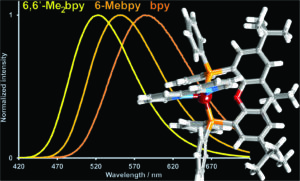 Phosphane tuning in heteroleptic [Cu(N^N)(P^P)]+ complexes for light-emitting electrochemical cells
Phosphane tuning in heteroleptic [Cu(N^N)(P^P)]+ complexes for light-emitting electrochemical cells
Brunner, A. Babaei, A. Pertegás, J. M. Junquera-Hernández, A. Prescimone, E. C. Constable, H. J. Bolink, M. Sessolo, E. Ortí and C. E. Housecroft,
Dalton Trans., 2019, 48, 446-460
Check out the full collection of recent research published in Dalton Transactions by all of our featured Golden Authors in our Celebrating our Golden Authors collection.
 eactions of the C–B–N-substituted borinium cation [MesBNiPr2]+
eactions of the C–B–N-substituted borinium cation [MesBNiPr2]+

